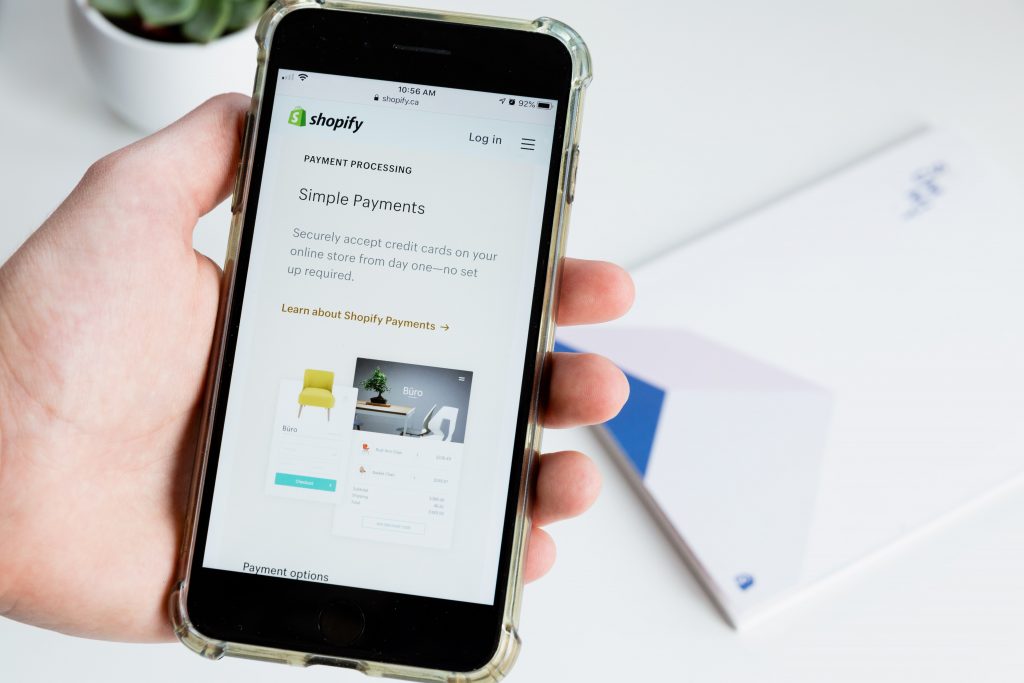Table of Contents
There are a million and one ways to make money online. While we could have built you a list that features cash back apps, survey sites, or donating plasma, we know you are too smart to waste your valuable time on short-lived wins.
Instead of chasing quick cash, why not make money online fast (or slow) by building something that will grow in value long term (so you won’t be Googling ‘How to make money fast’ again in a year)?
Choosing the right path to wealth can make or break whether you succeed. With so many options from eCommerce to Affiliate Marketing, which is the most efficient and profitable route to make money online?
And which one makes the most sense for you?
Read on to find out how to make money online while skipping the ‘get rich quick’ schemes.
1. Consulting and Services
The fast and easiest way to wealth online is to offer your knowledge or skill set to those who need it.
Whether you want to serve people as a personal organizer, a body language coach, or an IT consultant, testing your concept and winning your first customer can be as simple as posting an ad on Craiglist.
This path to success is a smart one because of its potential to transform into new profit streams.
Consulting forces you to determine your customer’s needs and problems to begin inventing solutions for them.
By creatively problem solving, you will likely create a range of systems and products that deliver value to your audience.
For example, as a personal organizer, you may discover your customer struggles with perfecting a cleaning routine.
To cure your customer’s problem, you conjure up a miracle magical solution: the ultimate daily organization checklist.
You begin selling this checklist as a PDF on your website. You realize, this checklist would be a killer web app. You create many other checklists like it and turn it into a book. You beautify the checklist into a planner you sell online. As your client base grows, you hire contractors to help out, and before you know it you have an agency.
As you can see, the simple act of consulting can easily branch into a full-fledged product business. Every business should begin by solving a problem for the customer. Consulting is the perfect way to intimately get to know your customer’s pain point.
Consulting can be difficult to take beyond 6 figures unless you get savvy with systems and outsourcing. In the early stages of consulting, you are still trading your time for money.
Working with clients and hiring to scale can be time-intensive. That means, it comes reasonably close to a full-time job and answering to a manager. Except, instead of one manager you have five, and instead of one job, you are responsible for everything from accounting to advertising.
Are you an extrovert? Consulting often also comes with intensive human interaction. Managing the demands of multiple clients and contractors is a high touch, human capital heavy endeavor that requires solid management and people skills.
If you are passionate about the service you offer and comfortable with staying small, fantastic. You can continue on as a one-person show. If you have your sights set on making millions (or billions) you must be ready to outsource and focus instead on managing company growth logistics.
PROS
- Make money fast
- Low overhead
- Free to start
- Low upfront investment
CONS
- Human capital heavy and high touch
- Time for money
- Difficult to scale
- Clients can be demanding
2. Digital Products
Whether it be an app, a Kindle book, or an eCourse, digital products are a wonderful solution to avoid the complexity and risk of manufacturing a physical product.
You can never ‘sell-out’ and digital products are free from the moving pieces of a supply chain. That includes the hassle of waiting for product inspections, backorders, and more.
The best part about selling digital products? Scale. Get enough traction, and you can sell to unlimited customers around the world while you sleep.
SAAS Products
You can even ‘level up’ your digital product business is to offer ongoing products or services.
The SaaS model (selling software as a service) is lucrative because it costs far less to engage a previous customer than it does to win over a new one.
By offering a subscription, your customer purchases your product on autopilot. Examples of SaaS products you might pay for include everything from Netflix to Spotify.
Building a SaaS company often involves more intensive upfront investment. That is why in Silicon Valley, you will find lots of tech bros seeking investors to build B2B software to each other’s B2B software companies.
But why not think small?
If you prefer to bootstrap, look to solopreneurs such as Mark Manson of ‘The Subtle Art of Not Giving a F*ck’. He gives subscribers unlimited access to courses, downloads, and exclusive content at the small price of 6 bucks a month.
You can do the same by offering anything from access to an exclusive community or unlimited content for your audience.
Digital Platforms
Another format for selling an online product is through a ‘platform’. You might be most familiar with platforms such as AirBnB or Craigslist, which empowers ‘peer to peer’ services and selling.
While these companies don’t directly provide services like hotels or taxis, they deliver value by connecting customers and vendors. The revenue is made by skimming a service fee out of every transaction made.
Monetizing your digital product through big tech platforms like Amazon or Apple places your livelihood at the whims of their policy changes.
I have seen App Entrepreneurs lose their business overnight when Apple updated its policy to ban re-skinning. I watched profits cut in half for successful Kindle authors after Amazon cut portions for affiliates and book sales.
Whether your chosen marketplace is Etsy or Google Play, you are building your empire on someone else’s land. Your landlord can change the rent prices whenever they feel like it. These tech companies can even ensure their own software is ranking above yours to monopolize market share.
Digital marketplaces are a wonderful start to gain customer share and awareness, so long as you also quickly build a direct pathway to your customer.
That means hosting your own website or store to sell books, courses, or digital downloads to stay in full control.
Selling digital products often goes hand in hand with being tech-savvy. Trying to launch an app if you don’t know how to code can be a nightmare if you have to rely on paying a developer for every minor update.
If you have a million-dollar app idea but don’t know how to code, consider repackaging your idea. Could you solve that problem with a book, a video, or a course instead?
PROS
- Simple to scale
- Low overhead
- Fast distribution
- Low touch
- High margins
- No inventory
- Little upfront cost
CONS
- Growing competition
- High talent costs
- Changing, unpredictable landscape
- Elusive product-market fit (for SaaS)
- Large time investment
- Piracy and copycats
- Heavy development or time costs
3. eCommerce – Selling physical products
The list of Forbes richest self-made women is awash in rags to riches stories of an underdog idea that became a household name.
Selling an innovative physical product to the masses is the American Dream and often the first thing most people think of when it comes to starting a business.
A common cultural myth is that you need to invent a product that doesn’t exist. The reality is much easier. Most products that succeed do so by adding a simple creative touch to something with an already proven need.
Think of things people already use and love.
- Protein powder, but make it colorful: Unicorn Superfoods.
- Tea, but make it detox, and you get Skinny Me Tea.
- Girdles, but make it fashion: Spanx.
- Think tea, but make it spirit infusions, and you get StirCrazi.
- Think razors, but make it subscription: Dollar Shave Club.
While our nation loves gathering around the warm glow of Shark Tank to watch deals and dreams getting made, the path to wealth through selling physical products to consumers is not always smooth.
While enjoying episodes of entrepreneurs crushing (or being crushed) at the whim of high powered investors, take note that the majority of the Sharks made their wealth through real estate, software, tech, and internet security. Only two earned their wealth by inventing and selling products.
Why is it you rarely hear about the entrepreneurs making millions selling tractor parts or starting ad companies?
Because we are consumers ourselves, we receive the most exposure to B2C (business to consumer) products. The press industry revolves around consumer brands making publicity plays.
In fact, selling physical products to the masses is often one of the most complex, competitive, and challenging ways to make a buck online, despite what Tim Ferriss might tell you.
Why?
For one, competition with China. Almost any product can be quickly replicated and knocked off. Patents can barely protect you overseas. You could spend a lifetime and every dollar of profit pursuing lawsuits on your trademark.
That means your success depends on your ‘spin’. Give your customers an experience that the competition can’t touch. Because they will definitely be trying if your concept is proven successful.
If you want to be successful in selling physical products online, focus first on building a brand and a loyal customer base.
The Internet moves fast, which means you will have to be agile and adaptable enough to change your business on a dime.
PROS
- Accessible
- Scalable
- Short term path to immediate sales
- Easy to market with traditional channels (Facebook Ads, Google, etc.)
- Few technical hurdles, thanks to sites like Shopify
- Low upfront time investment
CONS
- Competition
- Supply chain and Manufacturing logistics
- High overhead – storage space, inventory, demand generation, etc.
- Market saturation
- High Regulations
- Low Margins
- Inventory management
Quick Tips to Succeed:
- Find a product with high margins (50% or more) to account for the many costly and unknown variables (shipping, returns, etc.)
- Select a product that inspires repeat transactions. For example, dish soap instead of trampolines.
4. Advertising
Everything from television to Facebook runs on advertising, including most of the news and media we consume on a daily basis.
While this might seem intimidating, your own ad revenue business can be as simple as starting a blog or a YouTube channel.
While creators like Mark Manson might charge a small monthly fee for content, you might prefer to offer your content for free, while displaying ads on your website.
Another way to generate revenue from advertising is affiliate links. Many services and products pay out a small portion of revenue and sales referred from the source.
For example, if you write a coffee blog and post about your favorite flavor of coffee, you would include a unique tracking link for your reader to buy. When your reader clicks on this link to make a purchase, you receive a percentage of their twelve dollar purchase.
Another revenue generation opportunity is ‘sponsored’ content and posts. In this scenario, you are paid by a sponsor to either write or post a content piece about their product.
On a large scale, any digital products or ‘platforms’ like Amazon and Facebook can quickly escalate from a service to an advertising platform, by offering their vendors and sells the option to advertise.
PROS
- Accessible
- Scalable
- B2B
- Low Overhead
- High Margins
- Low upfront investment
- Opportunities for new revenue streams
CONS
- Competitive
- Time intensive
- Long term play that can take years for visible revenue
Making money online is entirely possible with the right amount of grit and savvy. Whether you want to retire early, pay off debts, or erase a temporary shortfall, you have the power to earn more.
You’ve already struck gold just by being born in the 21st century. We have hundreds of ways to build new income streams, and it’s not all surveys and cash-back apps. The Internet can open the door to a whole new level of career possibilities for you.
Now that you have carefully considered all of your options, are you ready to take action?
Get started right now:



